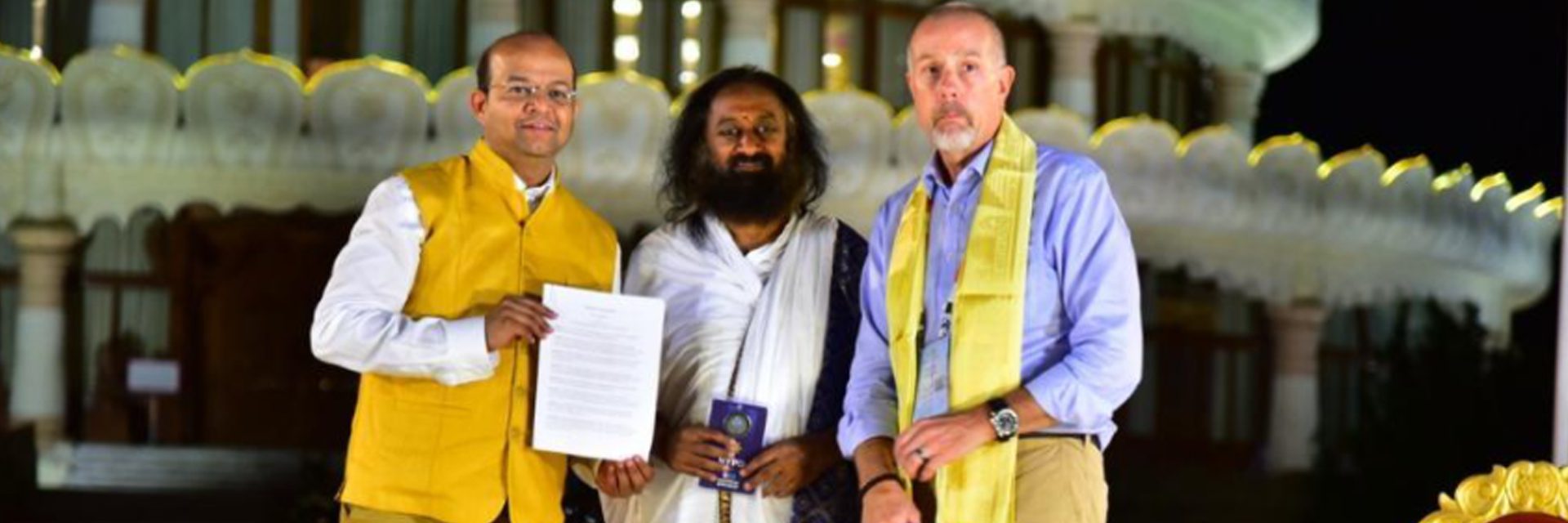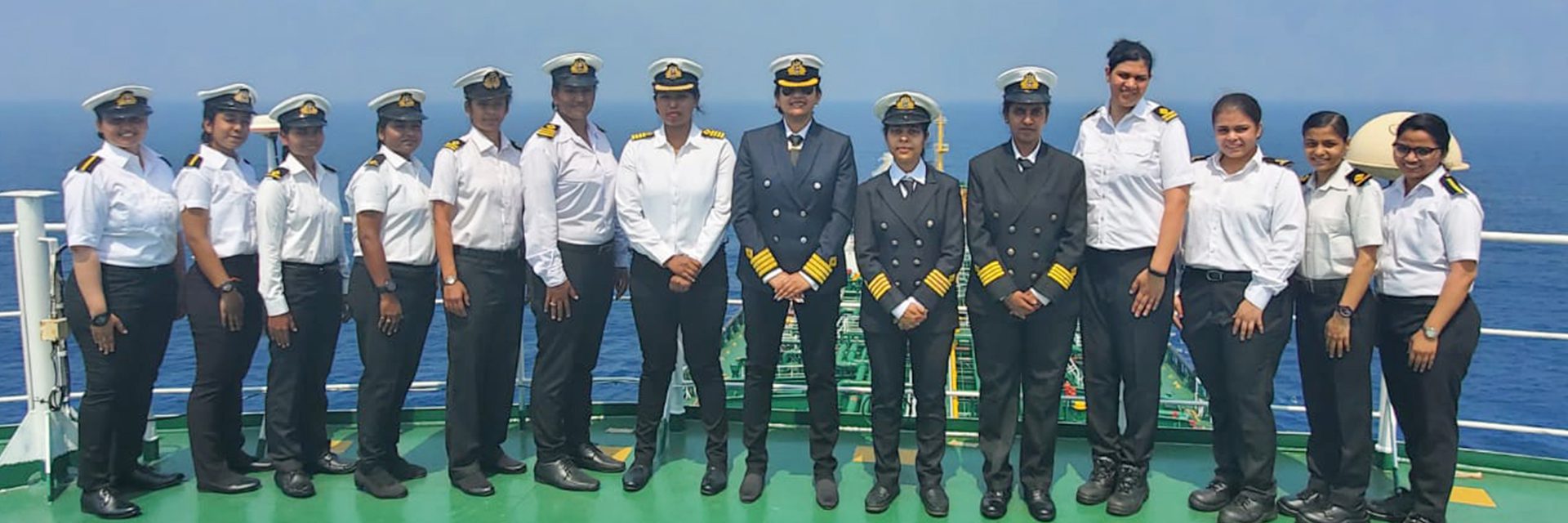(April 3, 2022) Ramshackle homes, homeless people slumped along the sidewalks, piles of drug paraphernalia and human waste everywhere, graffiti lining the walls and yellow police tape – the notoriously crime-infested streets of South LA are, most people would agree, best avoided. Here, gang violence and homelessness are rampant, drive-by shootings are almost a daily occurrence. This is where Mandar Apte, the founder of Cities4Peace, likes to go, with his big smile and the ability to make everyone feel like a friend. He meets unflinchingly with gang leaders with rap sheets that often include murder charges. Pranayama and meditation workshops are what he has to offer them. And in those moments of rare respite, rival gang leaders sit together in peace with the police officers and even victims of gang violence, doing Sudarshan Kriya together and speaking of peace.
In 2017, his documentary From India, With Love was premiered at Paramount Studios, Hollywood by the Los Angeles Police Department. It fetched him a critics award from Indica Film Utsav. In 2013, he won the Ashoka Accenture award, League of Intrapreneurship and in 2018, received the Hindu American Foundation Award for community service.

The 2018 premiere of From India With Love’ at Paramount Studios, by the Community Relations Division of the LAPD
Cultural melting pot in Tulsa
From designing oil and gas pipelines to teaching Sudarshan Kriya to gang members is quite a philosophical leap but Mandar’s life has never been limited to the straight and narrow. Growing up in Mumbai, he wanted to solve crimes like the Hardy Boys and longed for excitement and independence. That childhood fantasy did, in fact, shape his ambitions, taking him to the University of Tulsa in 1996. ” I had no special love for chemical engineering,” he chuckles, during his chat with Global Indian. “I got into the Institute for Chemical Technology (ICT) in Mumbai because it was an easy way to get a scholarship the US.” Graduating with a first class, he did get the funding he had sought and headed off to Tulsa.
A graduate programme in petroleum studies wasn’t quite what Mandar had dreamed of but he revelled in a “melting pot of cultures, with friends from Saudi Arabia, Venezuela, Brazil and several oil producing countries.” As they exchanged stories from home, he realised that he knew very little about his motherland. So he started reading books about India – he recalls Gandhi’s My Experiments With Truth, learning about the freedom struggle and the philosophy of nonviolence (Ahimsa) and Advaita Vedanta from the works of Swami Vivekananda,discovering the glory of ancient Indian wisdom sitting in Tulsa, as he did a degree in petroleum engineering

With Eric Garcetti, Mayor of Los Angeles
In the pipeline
He graduated in 1999 with an array of lucrative job offers on the table. “I chose one with a small oil company named Shell, have you heard of it,” he says, breaking into his jovial laughter. Working on oil and gas offshore projects around the world gave him the chance to travel and to make many friends. It was a stressful job, however and took its toll on his health.
So, in 2002, making a bid to better his physical health, Mandar arrived in Texas for what turned out to be an Art of Living workshop. “I had never done anything of the sort before. Growing up, I thought people who did yoga were losers. We Indians tend to value our culture only when we move away,” Mandar says. Mandar’s first teachers, incidentally, were an American couple. By the end of it, he was wondering where yoga had been all his life. “I practised the Sudarshan Kriya and my health improved.” In 2003, he met Sri Sri Ravishankar himself and found, he says, a “simple person, full of wisdom and humour. He asked me, ‘are you happy, Mandar’?
From India, with love
The change had begun. Mandar wanted to be a role model himself, to inspire other people. In 2004, he became a teacher at Art of Living, then began teaching meditation at Shell, too.

Receiving the Hindu American Foundation award from Democrat Tulsi Gabbard
In 2016, he arrived in India on vacation and was reading the autobiography of Dr Martin Luther King Jr. in which “King wrote that “he would visit any other country as a tourist, but to India, he came as a pilgrim,” Mandar says. “I can only imagine him landing in India and being welcomed with a tikka and aarti – it’s a show of love and warmth that one can only here.”
Mandar Apte decided it was an experience he had to share. He invited a group of six people from the US, all of them victims of violence on a similar journey across India. “I paid for their trips and hosted them in India for 10 days.” That’s how he made a documentary, From India With Love, showcasing their transformative journeys. He continues to host delegations of American leaders in India. “I’m leveraging India’s soft power, he says. Here, spirituality exists in every nook and cranny.”
The documentary was screened in Chicago’s gang-infested neighbourhoods, at a San Francisco prison and an inner city school in Newark. The last delegation he hosted was before the pandemic, comprising 34 people, including 17 police officers.
In 2016, Mandar Apte quit his job at Shell. Two years later, he was trudging through America’s most crime-infested neighbourhoods, offering to teach yoga and Pranayama in America’s most impoverished, crime-infested neighbourhoods. “He had never imagined (who would, really), that he would visit these places, “but I have walked into them without fear, met gang members and even made friends within the community. I know the police as well.

With Cheryl Lawson and her father, Rev. Bill Lawson – Civil Rights Leader and friend of Dr. King
Bringing India to L.A.
At one screening of the documentary at a church in South LA, attended by had Deputy Chief Tingirides of the Los Angeles Police Department, Mandar Apte followed up with his customary group meditation. “I requested everyone to stand up, hold hands, and pray for each other. I recited a Sanskrit prayer and asked them to say one of their own. They did. It was a very cathartic moment.” LAPD Chief Moore was impressed, presenting Mandar with an LAPD patch, a medal and a pair of cufflinks. LAPD Asst Chief Arcos remarked, “I can’t send my community to India with you but could you bring India to LA?”
And so, in April 2019 Mandar Apte organised a ‘bootcamp’ with former gang leaders, the police, victims of violence, parents and ‘at risk’ young people who “think that gang life is the high life.” They had one thing in common – the trauma they carried. “They didn’t miss a single session during those eight weeks. They did breathing exercises and the Art of Living programme together,” Mandar recalls.
The Ambassadors of Peace
At the end of the eight-week bootcamp, Participants are certified as “Ambassadors of Peace” and can teach basic yoga and Pranayama in their battered communities. “At the end of the session, when I asked people if they had stayed vegetarian, I saw gang leaders nod in agreement.” One man spoke: “I have never had a meal without chicken but since you asked us and I made a commitment, I managed on bread and jam, cereal and milk.”
A 23-year-old female gang leader accompanied Mandar to India in 2019. It was her first trip out of Chicago, where she and her nine siblings were all entrenched in gang culture. “I took her to visit the Central Jail in Bengaluru, where prisoners participate in the Art of Living programme. “The Indian prisoners were telling the Americans that if they had learned meditation earlier, they might not be in prison at all.”
He admits that he has come a long way. “Looking back, I wonder why I wasted my time on benzine rings! He jokes, of course – even his job with one of the world’s largest oil companies had its role to play in who he is today.




